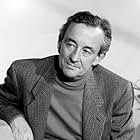Vibrant scenes of individuals' daily life are filmed in Place de la République.Vibrant scenes of individuals' daily life are filmed in Place de la République.Vibrant scenes of individuals' daily life are filmed in Place de la République.
- Director
- Star
Photos
Storyline
Did you know
- TriviaOriginally Malle intended to film in several different locations around Paris with professional actors. This plan was scrapped and he filmed ordinary people in the titular location in central Paris in lieu of actors and the 40 various 'sets' that were planned.
- Quotes
[first lines]
Louis Malle, Himself: Excuse me, sir. Did you realize we've been filming you for 15 minutes? Do you realize we've been filming you?
Old Man: What?
Louis Malle, Himself: Filming.
Old Man: Filming me? No.
Louis Malle, Himself: You didn't notice?
Old Man: Not at all.
Louis Malle, Himself: Do you live on the area?
Old Man: What?
Louis Malle, Himself: Do you live on the area?
Old Man: No.
Louis Malle, Himself: Are you from Paris?
Old Man: No.
Featured review
A voice-over explains: "The concept was simple: with camera and microphone in plain view, we struck up conversations with passers-by." The French word used is "des inconnus"— "unknown people"— which can have the sense of "strangers," "mere nobodies," or even the mathematical concept of "an unknown quantity." At another point the film makers tell one person, "It's about people in the street." Early in the film an older lady, retired, with a son and granddaughter, and "very happy," is astonished that the film makers are attempting to make a film without actors playing roles or to make a documentary without commentary. The film makers point out that she herself is at that moment providing the commentary. She seems delighted at the realization.
What follows for one and a half hours is about thirty-five encounters filmed over a fifteen-day period— a diverse range of people, many of whom willingly tell about their background, and some of whom discuss the very basis of their outlook on life. Some are decidedly odd. Many mention or give accounts of experiencing profound loss (some very recent), hardship, difficulty, or discomfort. Yet everyone is carrying on— some a little pathetically,— some gallantly, even beautifully. Some, whose personal situation might make a pitiful character in a fiction, are absolutely charming. All have dignity. All describe themselves as resigned, accepting, content, and even quite happy.
The film ends with a second encounter with a talkative woman pushing a bicycle. Her long and rambling story draws small crowds, and would seemingly have continued indefinitely if the film makers had been able to keep up with her on her bicycle. She rides beyond their range, and a quote from Raymond Queneau appears, translated as: "'Why,' he said, 'should one not tolerate this life, when so little suffices to deprive one of it?'" Without using scripted actors or commentary, the film succeeds as a tribute to the strength of the human spirit.
What follows for one and a half hours is about thirty-five encounters filmed over a fifteen-day period— a diverse range of people, many of whom willingly tell about their background, and some of whom discuss the very basis of their outlook on life. Some are decidedly odd. Many mention or give accounts of experiencing profound loss (some very recent), hardship, difficulty, or discomfort. Yet everyone is carrying on— some a little pathetically,— some gallantly, even beautifully. Some, whose personal situation might make a pitiful character in a fiction, are absolutely charming. All have dignity. All describe themselves as resigned, accepting, content, and even quite happy.
The film ends with a second encounter with a talkative woman pushing a bicycle. Her long and rambling story draws small crowds, and would seemingly have continued indefinitely if the film makers had been able to keep up with her on her bicycle. She rides beyond their range, and a quote from Raymond Queneau appears, translated as: "'Why,' he said, 'should one not tolerate this life, when so little suffices to deprive one of it?'" Without using scripted actors or commentary, the film succeeds as a tribute to the strength of the human spirit.
- billheron53
- Aug 31, 2011
- Permalink
Details
- Runtime1 hour 34 minutes
- Color
Contribute to this page
Suggest an edit or add missing content

Top Gap
By what name was Place de la République (1974) officially released in Canada in English?
Answer

